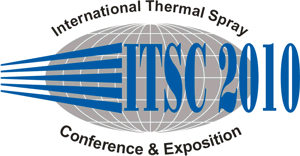
|
2172 |
|
Characterization of NiAl bond coat with ZrC additions prepared by cold spraying of ball milled Ni-Al alloy powders |
|
Chang-Jiu Li / Xi'an Jiaotong University, P.R. China Rui-Guang Xie / School of Materials Science and Engineering, Xi'an Jiaotong University, P.R.China Da-Hai Li/ School of Materials Science and Engineering, Xi'an Jiaotong University, P.R.China Guan-Jun Yang/ School of Materials Science and Engineering, Xi'an Jiaotong University, P.R.China Hong Cui/ School of Materials Science and Engineering, Xi'an Jiaotong University, P.R.China |
|
The failure of thermal barrier coating (TBC) is associated with oxidation of the bond coat (BC) which results in the formation of thermally grown oxide. The modifications of the BC materials to improve their oxidation behavior are essential to enhance the stability of TBCs. In this study, Ni/Al-ZrC alloy powders were synthesized by ball milling of nickel-aluminum powder with additions of fine ZrC particles. Ni/Al-ZrC alloy coating was deposited by cold spraying using N2 as accelerating gas. NiAl-ZrC bond coat was obtained by post-spray annealing treatment of cold-sprayed Ni/Al-ZrC alloy. The microstructure of the mechanically alloying Ni/Al-ZrC powder and NiAl-ZrC coatings was characterized by scanning electron microscopy and X-ray diffraction analysis. The results show that a dense Ni/Al-ZrC alloy coating can be deposited by cold spraying using the mechanically alloyed powder as feedstock. The microstructural evolution of the NiAl-ZrC during isothermal oxidation was examined through surface and cross sectional microstructure. The SEM and EDX analyses of cross sectional microstructure indicate that ZrC particles were homogeneously dispersed in the NiAl bond coat. During isothermal oxidation the NiAl- ZrC can be oxidized quickly to form a dense á-Al2O3 scale. The ZrC particles distributed in the interface between NiAl andá-Al2O3 scale were oxidized to ZrO2 and include intoá-Al2O3 scale to influence NiAl oxidation. |